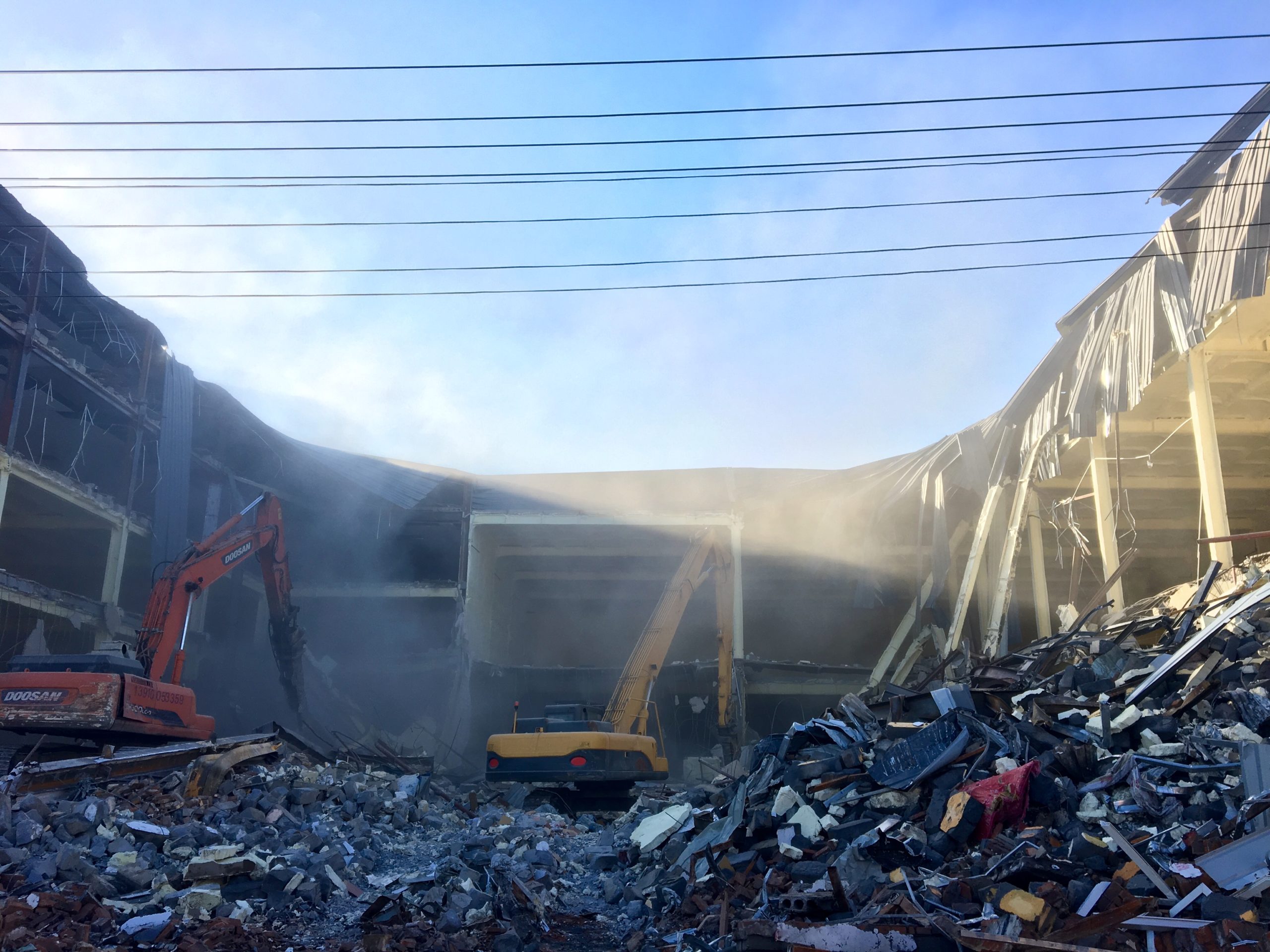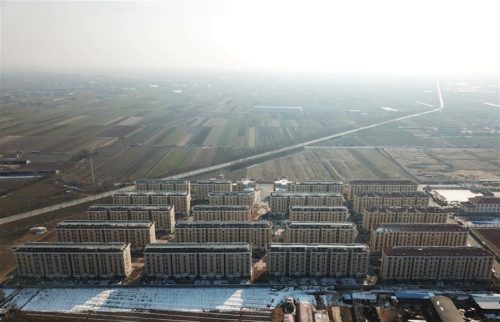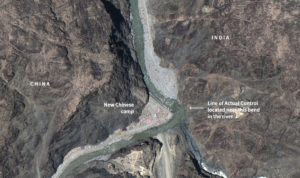Beijing’s year of demolition

Beijing is changing. Beijing has changed.
These photos first appeared on the Financial Times‘ online Chinese edition and are republished here with permission. All Chinese captions — translated below the pictures — are from FT.
Editor’s Note: Jady Liu, an undergraduate student, arrived in Beijing at the end of August 2016 and found himself riveted by the hutongs — the old, narrow alleyways that fork and wind through the heart of the city. But within a half-year, many of his favorite hangouts on those backstreets were being marked for closure — the forced kind, where bricks would suddenly show up in front of doors, and owners given no chance for reprieve.
It began last October around Baochao Hutong 宝钞胡同 near the Drum and Bell Tower, with ominous notices posted around the neighborhood warning of wide-swathe “remodeling.” After a quiet winter, the notices reappeared in March, this time in several hutongs all at once. Not every business was affected, but many popular bars, cafes, and shops, both foreign and local, were quickly shuttered.
“It still defies logic to me, it seems crazy,” says Kerryn Leitch, who lives on a hutong and has closely documented these developments. “Just to see everyone on the street suffering for it, it was heartbreaking. Whenever a place would get bricked up, you’d see all the neighbors standing next to their businesses and homes looking forlorn.”
I remember thinking how weird it was, how arbitrary which places were allowed to stay and which were not. And I remember the guessing game we played through the spring and summer — which hutong bar would be the next to go? The bricks that would materialize in front of shop windows — often literally overnight — were “the harbingers of doom,” as Leitch puts it.
“Every time I left the house, I passed people whose lives were, if not destroyed, seriously inconvenienced,” she says. “The family home across from Mas” — a former bar — “does not have a door: It has a hole that’s been there since the end of April, a big gaping hole with no door in it. I can’t imagine winter is very fun at that house.”
Leitch is organizing an event on January 7 to raise awareness, with several zines chronicling the changes of the past year (she recently held a Shanghai event that did the same). “The pictures are like a time capsule,” she says. “For myself, and for different locals, everything was almost erased in a matter of weeks, so it did seem extremely important that there was some kind of record of what was there before.”
For Liu — who started a WeChat group and public account called Beijing Hutong Team 北京胡同小组, which organizes offline events — the need to document also felt urgent. “In the end, what will Beijing look like? I have no way of knowing,” he writes in the introduction to the following photo essay in the Financial Times. “I can only silently record the surrounding changes in a vain attempt to leave behind a personal record of Beijing.”
Beijing’s yearlong beautification and gentrification campaign — part of an official depopulation drive — might make the city cleaner, possibly even prettier in the years to come, but the process has been messy, haphazard, and upsetting (look at the recent mass evictions from Beijing’s urban villages for more examples). Liu’s photos — and the efforts of people like Leitch — are reminders of what we lose in the name of development, of what has already been lost. —Anthony Tao
HUTONG MAP, showing the northeast quadrant of the city center (inside Second Ring Road), zoomed out (click to enlarge):
HUTONG MAP (click to enlarge), showing (from north to south) Fangjia Hutong 方家胡同, Heizhima Hutong 黑芝麻胡同, Fangzhuanchang Hutong 方砖厂胡同, Fuxiang Hutong 福祥胡同, plus the neighborhoods of Beixinqiao 北新桥 and Jiaodaokou 交道口:
HUTONG MAP (click to enlarge), focusing on the area between Beixinqiao and Dongzhimen 东直门 just inside northeast Second Ring Road, showing Fangjia Hutong, Guijie 簋街, and Xinsi Hutong 辛寺胡同.
HUTONG MAP (click to enlarge), focusing on the area just below North Second Ring Road, showing Jianchang Hutong 箭厂胡同, Liulisi Hutong 琉璃寺胡同, and Fangjia Hutong:

April 28, 2017. Sanlitun backstreet (also called “Dirty Street”): A DVD shop continues to operate even after its front door has been converted into a window.

April 29. Beixinqiao: A posted notice about the area’s renovations. This summer, notices like this one were posted in hutongs everywhere.

April 29. Beixinqiao: People drink beer and chat outside a bar on its last day of operation.

April 29. Guijie (an area known for its restaurants): An unexpectedly collapsed structure.

April 29. Xinsi Hutong: An “illegal hole in the wall”; the word fortune is pasted on its door.

May 3. Fuxiang Hutong: A slogan hangs across a building.

May 3. Beixinqiao: A gallery space/hair salon being remodeled; on the other side, a cafe’s chalkboard offers a message of optimism. (“There are some people in life who make you laugh a little louder, smile a little bigger, and live just a little better.”)

May 6. Liulisi Hutong: Bundles of bricks and an abandoned door.

May 8. Jiaodaokou: Construction workers seal off an entryway.

May 8. Jiaodaokou: A father playing with his son next to a removed door.

May 8. Jiaodaokou: A door’s mask stares at passersby.

June 30. Jianchang Hutong: An art space with a wall and iron-railed window in place of what was a glass door. Behind the double-sided mirror in the window is a monitor, with footage transmitted into a cafe next door.

July 2. Fangjia Hutong: An installation art piece using shards of bricks. Nearby, people sit for a meal.

July 9. Heizhima Hutong: An installation art piece. Rectangular blocks are scattered on the floor after being pulled apart.

July 13. Fangjia Hutong: After remodeling, a bar (called Cellar Door) puts a stepladder next to where its door used to be, to allow customers to enter through the window.

July 31. Fangzhuanchang Hutong: Trash accumulates in front of a building.

August 4. Jianchang Hutong: A resident buys groceries from a remodeled store.

August 22. Caochangdi (an art district in the city’s northeast): Rubble left at a demolished site where artists used to congregate.

September 3. Feijia Village (in the city’s northeast): A notice posted in a courtyard about the demolition of illegal spaces.

October 3. Bricks piled up on the road, in front of a political slogan, next to a university street.

October 28. Xinghua Street (in Daxing District, southern Beijing): Slogans on the side of the road.

November 4. Chaowai North Street (within East Second Ring Road): Scaffolding and character for “double happiness.”

November 26. Xinjian Village: Not far from where a fire ripped through the Jufuyuan apartment complex (on November 18, killing 19), two excavators go about dismantling.

November 27. Picun Village: A slogan (“Picun Village welcomes you, avert fires, maintain peace”), on the same night that all tenants renting apartments were ordered to leave.

November 30. Xinjiekou Outer Street (outside North Second Ring Road): A business that has already moved away.
Also see:
Demolition of Laoximen: Shanghai’s best link to its pre-colonial past may soon be gone









